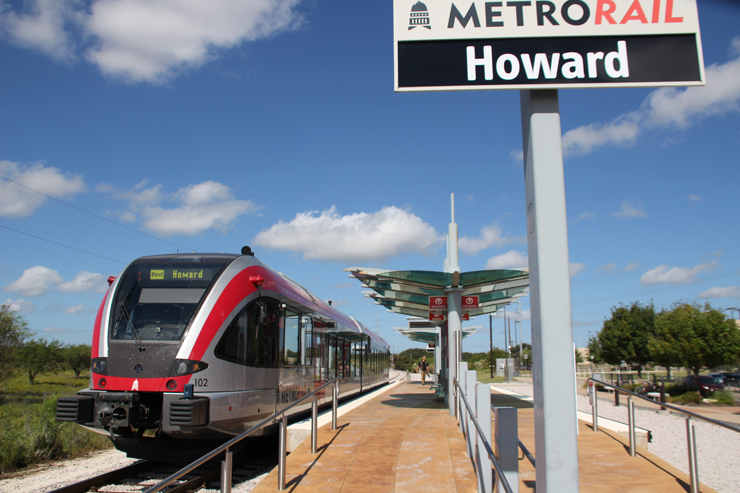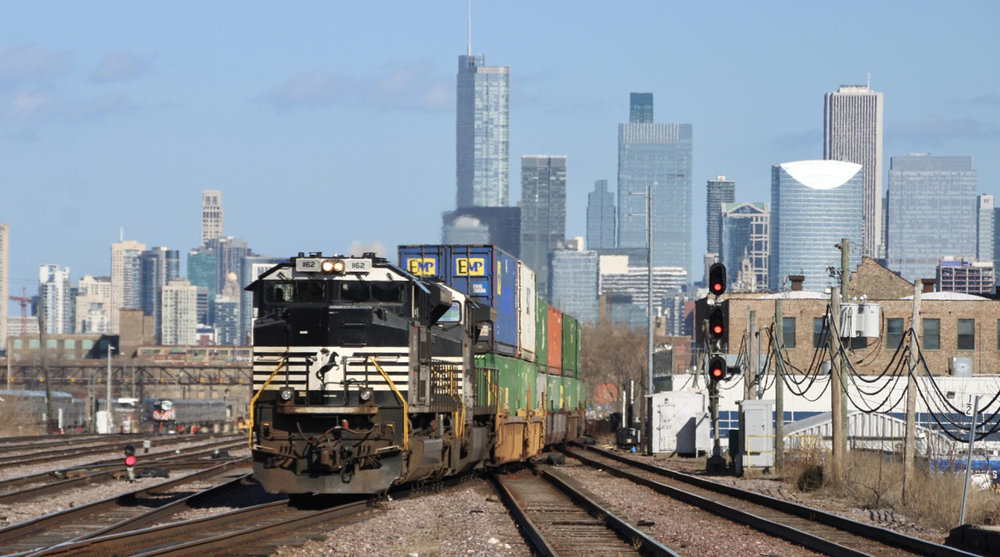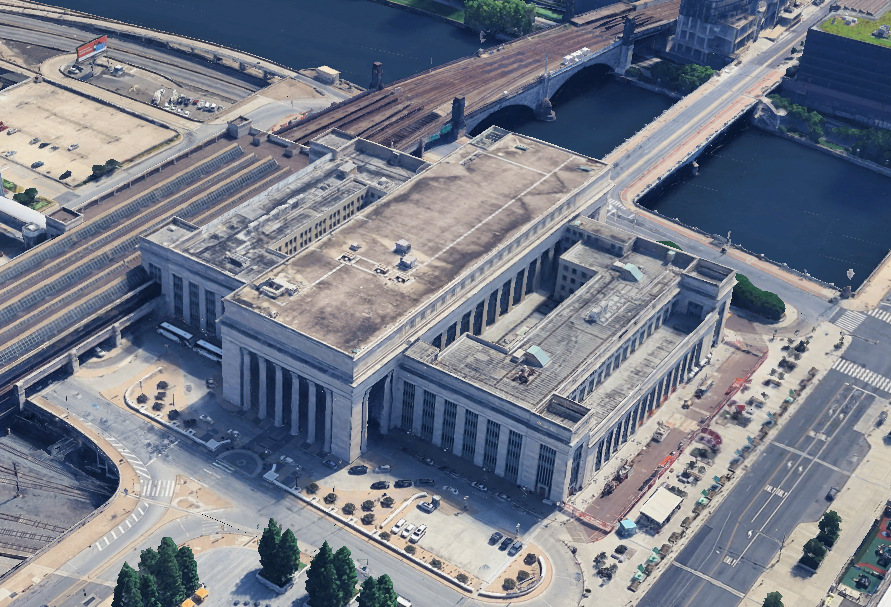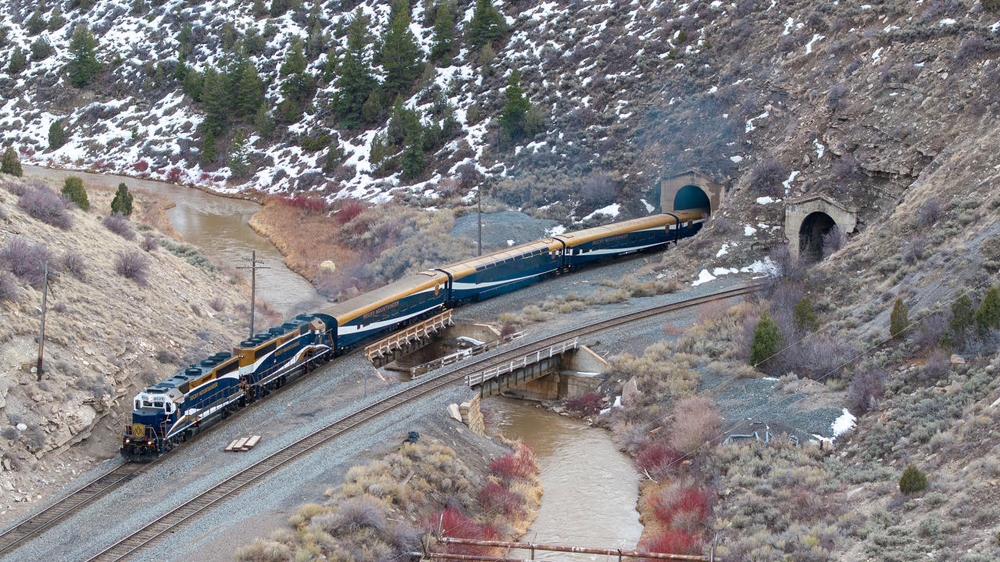AUSTIN, Texas — Austin city officials have begun the process of determining how to pay for a transit expansion that could cost as much as $9.8 billion if it includes new rail lines.
The Austin American-Statesman reports the “Project Connect” proposal includes two light rail lines, the Blue Line running from downtown to Austin-Bergstrom international Airport, about 9 miles southeast of the city, and the Orange Line, on another on a north-south axis using North Lamar Boulevard, Guadalupe Street, and South Congress Avenue.
Transit agency Capital Metro estimates the Orange Line could carry 45,000 to 74,000 passengers daily by 2040; estimates for the Blue Line are 30,000 to 52,000.
A bond issue to fund the proposal is likely to go to voters in 2020, and Austin City Council members on Wednesday began discussing options that would shape the price of the project, such as building bus rapid transit lines rather than light rail, the Stateman reports. Bus rapid transit would have lower costs but also lower capacity.
The proposal is a slimmed-down version of a plan first presented in 2018 [See “New rail lines part of ambitious Austin transit plan,” Trains News Wire, March 27, 2018]. That version included three rail lines. Austin’s only current rail transit is a 32-mile, nine-station commuter line using diesel multiple unit trainsets.
Capital Metro projects federal funds could cover about 40% of the project, leaving a range of cost estimates of $1.9 to $5.9 million to be funded by local voters. Voters turned down lower-priced rail proposals in 2014 and 2000.















While Austin is not a “small town”, the compact downtown core is densely concentrated and perfectly suited for light rail with the government offices and university, not to mention hi-rise residential and tourism being major traffic generators. The slimmed down PROJECT CONNECT proposal is an excellent starting point. If you keep it SIMPLE using proven off the shelf technology (THINK SIEMENS S70) and not OVERTHINK and OVERBUILD like the original Capitol Metrorail fiasco, the citizens of Austin will quickly embrace their new transportation option and develop a hunger for expansion. The wide street corridors left over from Austin’s original street railway system are still intact and act as the commercial strips where residential is on the side streets which is a major zoning advantage. The new Portland Oregon street railway which was built around those same advantages has been built quickly, inexpensively and was a hit with the public from day one. There is no reason why the enlightened citizens of Austin cannot muster the will to do the same.
Austin is not a “small town”. The last I looked it was like the 12th largest city in the US and maybe the fastest growing one. They do have major traffic patterns at rush hours. Increased bus service alone would only work if they have dedicated bus lanes that are not on the major highways. In other words RR type of right-of-ways without the tracks for the buses.
Brett Reid has clearly never driven Highway 101 in Marin County during rush hour.
And indeed. Austin is not a small town. Far from it. It’s the 11th largest city in the US. The population is 965,000 (2019 est. 2017 1st was 950,000, which means it’s growing very quickly). Google is your friend, kids. The 5 county metro area is over 2M. according to this web site: http://worldpopulationreview.com/us-cities/austin-population/
Brett Reid,
I’ll bet the news crew didn’t drive the route during rush hour…which can take up to 3 hours to negotiate a 75 mile drive(in both directions) and that doesn’t include the cost of fuel, vehicle maintenance and insurance as well as wasted time. SMART will be an even better choice once the extension to the Larkspur ferry terminal opens next year…and I don’t even live in Marin County and know this.
Nashville has to contend with rivers that canalize every form of transportation and confine your options to difficult lines of communication. Likely the will is there but geology and geography are the big obstacles.
PENELOPE – Nashville’s problem is that no one can figure out where to put what transit line or suburban rail line. The metro population (which continues to grow) is far more than can be supported by the geography it sits on. For example, the CSX line to Chattanooga is single track with no room to expand it. For another example, there is no conceivable rail corridor from BNA Airport to anywhere in any direction. Nashville Metro Davidson, and the surrounding counties, are one big parking lot misnamed “freeways”. Off the freeways, the roads are suitable for a quarter of the population.
I can’t comment on Austin or San Antonio, haven’t been to either.
If Austin succeeds with this proposal, it will surely put Nashville and San Antonio to shame in the rail transit context.
Blue line to the airport much cheaper to build and ought to meet projections (quite a bit or ROW has lightly used or disused freight rail).
So I wonder what fraction of the $9.8B is for the Orange Line which strikes me as very expensive, especially in the narrow Lamar corridor and in congested and expensive downtown (South Congress is pretty wide).
Or it can turn out like “SMART” in California. A news crew took the train then drove the road that parallels it, The drive time was way faster than the train ride, what a debacle, billions & billions of $$$. Texas is WAY smarter than California, RIGHT??? I just realized that This website didn’t cover that story, Hmmm.
That’s alot of $$$ for a “small” town, Its like CAHSR, but in a smaller scale.
Milwaukee mayor Tom Barrett is boasting that his 2.1 mile trolley is a success because ridership (which is free) has beat ridership projections. (Projections that weren’t exactly sky-high.)
The operating budget, combined city and sponsorship, is $5.7 a year for about 650,000 free rides, or over $8.00 a ride where rides average about a mile.
The thing cost $124,000,000 to build, a figure which I presume includes roiling stock (five cars). At 5% capital recovery, that’s about $10 a ride.
So the cost to go a mile or so is about $18.00, of which not a cent is paid by the rider. In contrast taxi fares come out to maybe $3.00 a mile (plus gratuity), all of it paid by the patron.
Certainly this isn’t typical. Milwaukee’s trolley is the worst case. I’m not saying Austin or anywhere else would gobble up Milwaukee’s ridiculous wastages. What I’m saying is, don’t listen to the politicians, don’t listen to the transit advocates, look at the numbers. If the numbers work for you, that’s fine, I’m all for it. I’ve ridden richly subsidized trains and trolleys and subways and people movers and buses all across America and three foreign countries as well. If Austin’s numbers come in within a reasonable range then go for it.